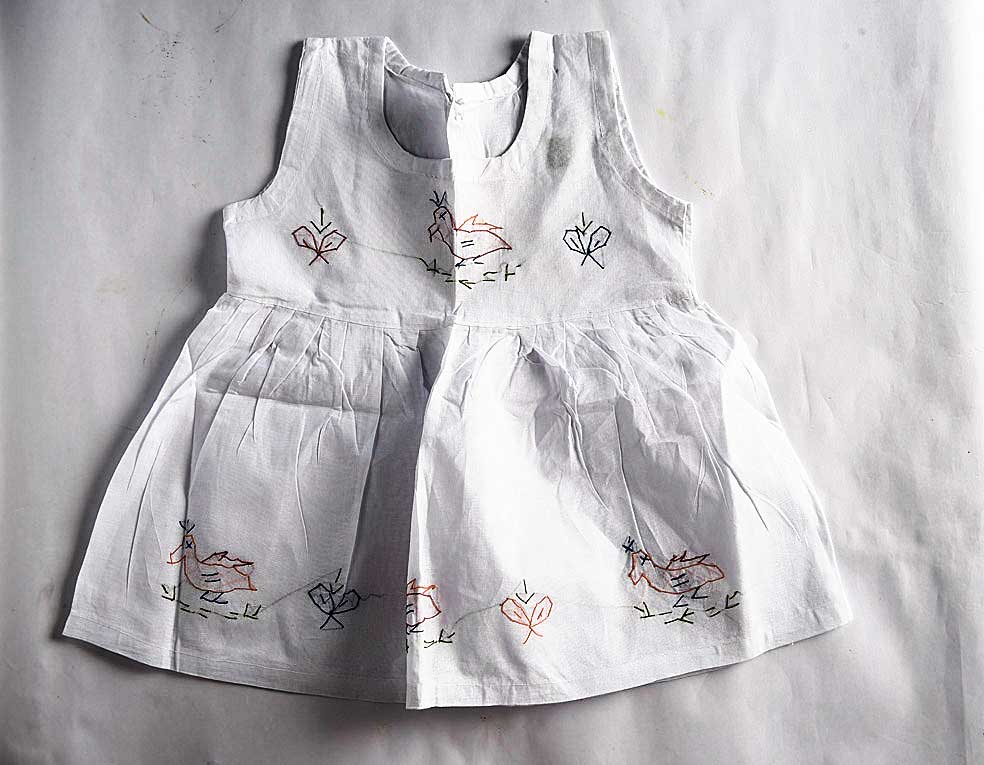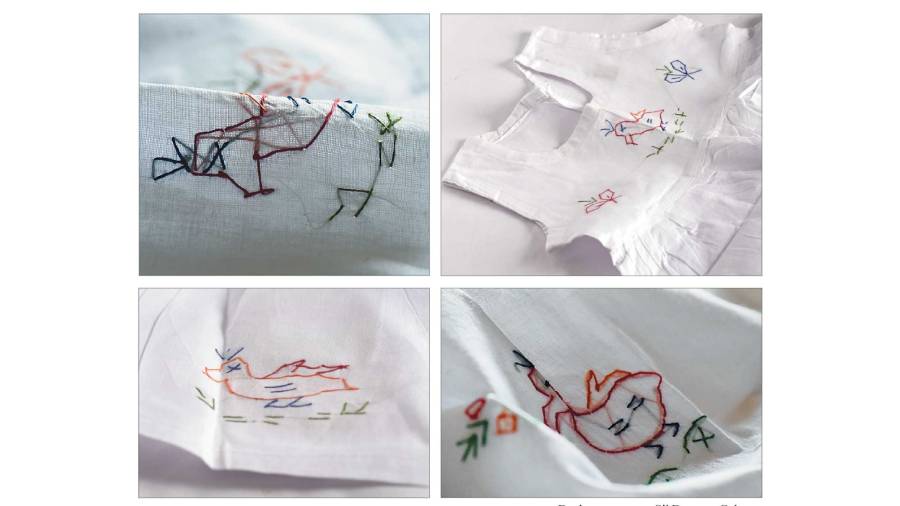Summers in Bengal have always been more humid than summery. Barely does a shiny yellow day pass by without the cool greys of an evening shower, the sweet respite quickly dissolving in a cauldron of thick, still-persistent humidity.
In such a climate what works best is thin lightweight flowing cotton, much of which is now being lost. And, among the many such priceless things that seem to have vanished is a wistful memory of little girls’ summer months: the tape-frock, also known as the tape-jama in Bangla. A jama is a garment in Bengali, and a tape, well it must have denoted the size measures in inches that tape-frocks were sold in.
Tape-frocks have always been made of fine cotton known as addhi. This is the same fabric that’s used to make gents’ kurtas and is almost always in white. An addhi is one sixteenth of a rupee, denoted by a few cowries. Once upon a time, a bale of this white cotton sold for an addhi: the price of a bale became the identity of the fabric.
The tape-jama was an ideal daytime wear for girls from infancy till pre-teens, and later as an improvised chemise into their teens, to be worn as a buffer between the skin and the overgarment. It didn’t cost a tenth of the newfound fancy sweat wicking garments presently in vogue, but performed the task of sweat wicking most effectively indeed.
The typical tape-frock had a not very fitting empire waist – a high waist – for comfort and easy movement through the day. It was embellished with shadow work embroidery in bright colours that never bled. Shadow work embroidery uses the herringbone stitch and is worked upon the reverse of the fabric with the right side revealing an outline filled with a pastel hue. The motifs were local: flowers, leaves, fishes, birds etc.

The typical tape-frock had a not very fitting empire waist – a high waist – for comfort and easy movement.
The tape-frocks were available in stacks of sizes all over the markets and bazaars of Bengal. To my knowledge tape-frocks and cutwork petticoats were perhaps the most exported items from Bengal. Stuffed in suitcases of families en route family reunions at summer vacations were fresh light brown paper thongas – handmade open mouth envelopes secured with bell pins – each carrying a different size ordered by relatives not having the privilege of living in supercool Bengal.
Over the years, as western silhouettes invaded our minds, these loose tape-frocks and chemises were at variance with the body hugging slips used in the West. Made of knit fabric, slips were meant to conserve body heat in cold climates but were embraced super tight by us here in sweaty India. How could a simple, light cotton and hand embroidered tape-frock compete with a most unsuitable slip riding high on swanky posters of pretty fair girls?
Was it just the slip that heralded the untimely demise of the tape-frock? Or was it something more than that? In an upwardly mobile India connected globally through colourful media streaming from affordable data propelled screens, we were all in a rush. Perhaps wanting to reach somewhere we knew not? In our zest for glitz were we shutting ourselves off from light?
Letting go of all that was real luxury? Like the feel of cool breathable airy cotton worked upon by nimble fingers on lazy afternoons? Did we, in associating upward mobility with everything western, stamp the handmade heritage of India as downmarket?
Soon it will be impossible to find handmade jewellery, the kind our grand mum’s gave our mums. So will it be with the tape-frock.
The columnist is the founder-CEO of Necessity-SwatiGautam, a customised brand of brassieres. Contact: necessityswatigautam@gmail.com










